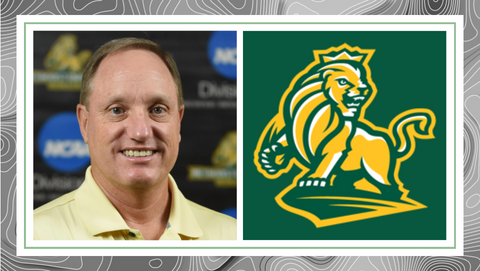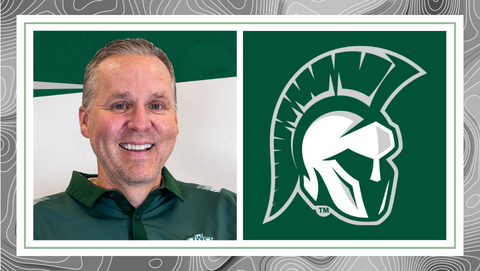by Jay Coffin
Quoted in this post

Steve Conley | Methodist

Jim Ott | Illinois Wesleyan

Dan Rodgers | Carnegie Mellon
It’s difficult to explain the thoughts that go through your head as a father when you see your son standing on the practice range, being coached by a man who has won 13 NCAA Championships.
It was early and chilly this Saturday morning at Mission Inn Resort in Howey in the Hills, FL, during the first day of a College Golf Experience (CGX) Boys Exposure Camp. My son Brady and I were there to see how his skills stacked up against the other juniors and to go behind the scenes with college coaches. He was always a baseball player who dabbled in golf but started to take the game more seriously four years ago.
CGX has not been on the scene long, but the popularity and growth of its engaging camps now include Tournament Prep Camps, Prospect Camps, and Exposure Camps (CGX Top25 Camps, Ivy Golf Institute Camps, DIII Camps, and International Camps). The educational camp model, which is all led by college coaches, has spread rapidly nationwide, inspiring our family and Brady to check out one of their DIII Exposure Camps. And we were not disappointed.
The camps bring junior golfers, parents, and college coaches together to learn from each other, gain exposure, and educate young men and women on the college golf landscape and the road to get there through transformational events. These events help players and parents understand the journey to finding their ideal fit and program. This includes learning about the unique recruiting pathway, Q&A sessions, simulated college golf practice and tournament rounds, and on-course management and strategy sessions.
By mid-morning, Brady, a 17-year-old high school junior, had already worked on bunker shots with Emory coach John Sjoberg and had moved to the full-swing portion of the skills sessions. That’s when Methodist College legend Steve Conley rolled up to Brady and started a conversation.
(Full disclosure: I have talked with Conley at least a dozen times in a previous life where my job was to write previews and recaps of the Division III season. But we hadn’t been in touch in probably 15 years.)
Conley diffused any nervousness with Brady by being playful and telling jokes, as he’s prone to do. Brady had been battling a right miss off the tee, so he hit a couple drives to show the coach, who got to work to diagnose the problem. Within five minutes Conley had Brady hitting beautiful draws unlike anything I had ever seen him hit. It was wonderful to see, knowing that Brady knew Conley was a big deal in college golf circles, but truly not aware of his unrivaled resume which includes nine NCAA titles in a 10-year span in the 1990s, and his 13th title coming just two years ago.
“This is my first experience with the camp,” Conley said. “I really like it for a lot of reasons. You can interact here vs. a regular tournament, where typically you can’t speak to a kid. You get to see their skill level, they get some idea about how you coach and teach, you can share philosophies, work on course management and you still get to see them play in a competitive environment.”
The first afternoon was spent with coaches rotating holes to make sure that they got a look at each camp participant for at least a couple holes. The star-studded coaching lineup on the men’s side included Conley, Sjoberg, 2023 NCAA champion coach Dan Rodgers from Carnegie Mellon, 2019 and 2021 NCAA champion coach Jim Ott from Illinois Wesleyan, Christopher Newport’s Jamie Coleman, Wittenberg’s David Wetterich and University of Redlands’ Jamie Zantua. Each coach was informative and helpful, while keeping the round as light as they could.
Brady worked through a situation with Conley where he, of course, wanted to go for the green in two on a par 5, his ball sitting just into the light rough 230 yards away from a back pin. Conley let Brady pull the trigger but didn’t question his decision or club selection. Brady thinned it, left the ball way short, finding water.
Conley calmly asked Brady which club he used. And here is the conversation:
Brady: 4-iron
Conley: How far do you hit that?
Brady: 225 yards
Conley: How far was it to carry the water?
Brady: 180 yards
Conley: Which club would you use that would easily carry 180 yards?
Brady: 6-iron
Nothing else needed to be said.
“It was a great weekend, and the coaches were so helpful,” Brady said. “I left there knowing what I need to work on to get better, starting with course management.”
Sunday included a competitive 18-hole round where coaches again acted like they would during a regular round for their own squad during a tournament. They were involved, helping players through club selection, judging wind directions and providing overall strategy. This time though, there were nervy moments because a score was being recorded.
“I would pass on a player that might be better statistically than someone that I know would fit better that has potential,” Carnegie Mellon’s Rodgers said. “That kid may pull others up, may be a great teammate or a great encourager. That’s where I’ve found that these camps are great for that.”
“Generally, I’m trying to see if I can be in the van with them for four years,” Rodgers continued. “That’s a big deal. I think we don’t talk about that enough. I plan to be there a long time. So this new person is coming in to be part of our extended golf family. How do they fit with us? It’s not us fitting with them. That’s a bad move.”
The most eye-opening portion of the weekend, however, came Saturday after dinner. Parents were on their own when the campers had dinner with the coaches but afterward there was a question-and-answer period where everyone could attend. Most were tired from a long day with an early start, but each coach was so helpful and answered question after question with great depth and sincerity. It was refreshing.
College athletics is such a cut-throat business, but the coaches who have won each of the last five NCAA Championships, among the others, had no problem answering openly and honestly. What do they look for in an email? What they do not want to see in an email. What sort of events do they expect you to play? What type of grades do you need? When is a good time for a campus visit? When do they typically finalize their team rosters for the next year? The pros and cons of social media.
No questions were off limits. In fact, one coach specifically gave Brady incredible advice on how to communicate with the coach of a school that he had been wanting to contact.
Illinois Wesleyan’s Ott, when explaining the benefits of playing Division III golf, had one of the best lines of the night. He’s passionate about his school, he’s passionate about his team and he’s passionate about students finding a place to play that fits them. He knows Division I is the top dog and he’s well aware of the aura that surrounds playing for one of those schools. His pitch however: why go to a Division I program and struggle to get playing time if you can go to a top Division III program, play more often, and participate in “meaningful golf.”
With those two words, a lightbulb came on in Conley’s head. He’s been coaching his Monarchs since 1987 and hadn’t heard this explained quite that way.
“Meaningful golf,” he said. “I’m writing that one down.”
